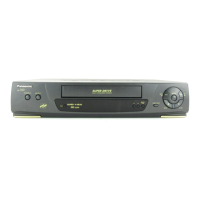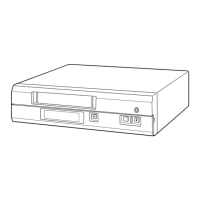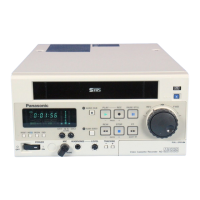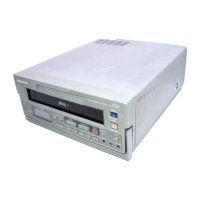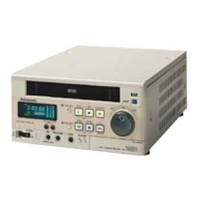4-4. ASSEMBLY AND ADJUSTMENT PROCEDURES OF MECHANISM
The
mechanism of this model
is
mostly engaged to the System Control Circuit, through the mode select switch.
Therefore the relation between the mode select switch
and
the
cam
gear decides
all
further mechanical movement of
the
mechanical parts such
as
levers,
gears,
rollers
and
so
on.
If
these parts
are
not fixed properly, the unit will
be
unloaded or compulsorily stopped.
And
it
will result being damaged
at
any
mechanical or electrical
parts.
The
overall mechanical condition (alignment) of bottom
and
top view
are
shown
in
Figure
M45
and
Figure
M46.
This
mechanical adjustment
is
performed
in
the
STOP
mode.
4-4-1. CONFIRMATION OF ALIGNMENT
CONDITION
1.
Remove
the Loading
Belt.
2.
Unscrew 4 screws and remove the Gear Base
Unit.
(Figure
M45)
3.
Turn
the Center Gear to counter-clockwise until 2 big
holes of Center Gear align with 2 big holes of
Retainer
Gear
and
Ring
Gear
and
Chassis
as
shown
in
Figure
M47.
4.
Identification hole
on
the Mode Select Switch
at
6
oclock position and aligned with
small hole
on
Pinch
Cam
as
shown
in
Figure
M46.
5.
PS
Arm
Is
completely loading position
and
the inclined
Base
(S)
and
(T)
are
completely unloading position.
Screws
Gear Base
Unit
Figure
M45
Center
Gear
Through
Holes
Detent
Arm---.111~
Sub Cam Gear
6.
Small
hole on Sub
Cam
Gear should align with small
hole
on
the Connection Gear
and
rectangular
mark
on
the Connection Gear should
be
at
a 3 oclock position.
7.
Pressure Roller Unit
is
UP
position.
Sub Cam Gear
~---
I
I
\
/
I
\
\
/
'
......
_-,.,....
Connection
Gear
Figure
M46
Top View of Overall IQ-Mechanical Condition
Sector
Gear
Loading Gear
(T)
Loading
Cam Gear
Loading Gear
(S)
Retainer
Gear
Ring Gear
Figure
M47
Bottom View of Overall Mechanical Condition
4-15
....
z
w
:E
....
en
:::)
....,
c
<C
......
<C
(.)
z
<C
:I:
(.)
w
:E

